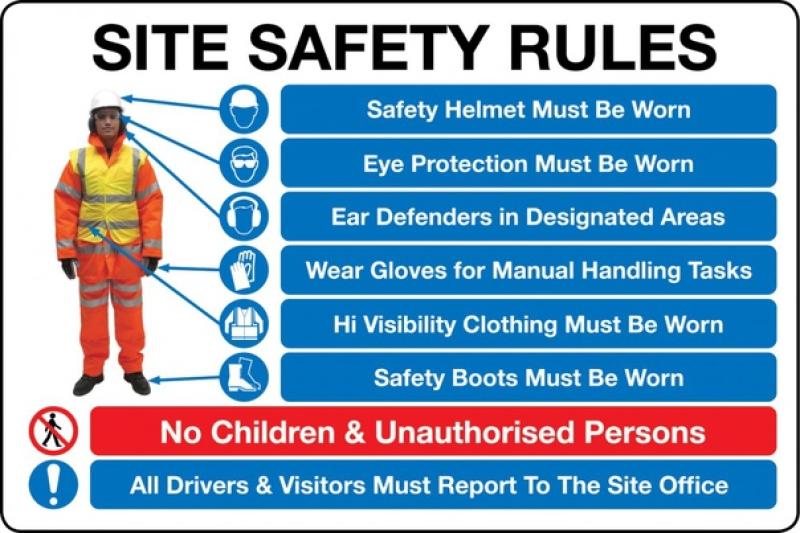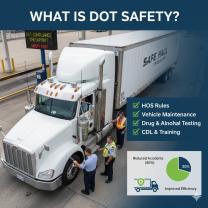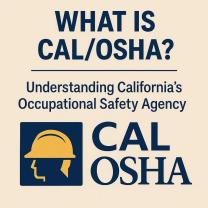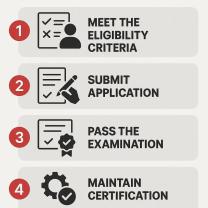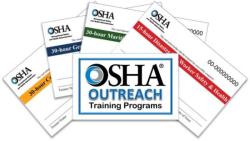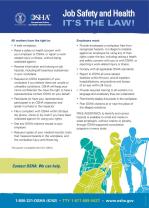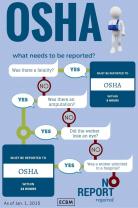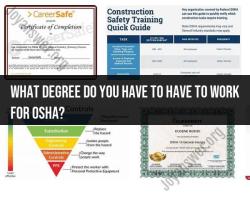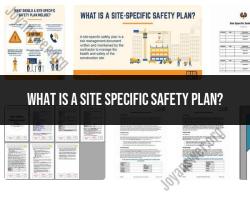What training is required every year by OSHA?
OSHA does not generally mandate specific annual training requirements for all industries. Instead, OSHA's training requirements are often tied to specific workplace hazards and activities. The need for annual training is determined based on the potential hazards present in the workplace, and training should be provided as needed to address those hazards. However, there are some general OSHA training topics that employers may need to revisit annually or periodically. Here are a few examples:
Hazard Communication (HazCom):
- Employers must ensure that employees are trained on the Hazard Communication Standard (29 CFR 1910.1200) when they are exposed to hazardous chemicals. While initial training is required, periodic training may be necessary when new chemicals are introduced or when there are changes to existing chemical hazards.
Bloodborne Pathogens:
- Employers with employees at risk of exposure to blood or other potentially infectious materials must provide initial and annual training on bloodborne pathogens (29 CFR 1910.1030).
Fire Extinguisher Use:
- While not explicitly required annually by OSHA, fire extinguisher training is often recommended as part of an employer's emergency preparedness program. Regular refresher training may be beneficial.
Respiratory Protection:
- Employers must provide annual training for employees required to use respiratory protection equipment (29 CFR 1910.134).
Confined Space Entry:
- Training on confined space entry (29 CFR 1910.146) is required for employees who may enter confined spaces. Refresher training is necessary if there are changes in procedures, equipment, or hazards.
Lockout/Tagout:
- Employees involved in maintenance or servicing of machines and equipment must be trained on lockout/tagout procedures (29 CFR 1910.147). Retraining is required when there are changes in the workplace that pose a new hazard or when there are changes in energy control procedures.
Fall Protection:
- Workers exposed to fall hazards must receive training on fall protection measures (29 CFR 1926 Subpart M). Refresher training may be necessary if there are changes in workplace conditions or procedures.
Emergency Action Plans (EAP):
- Employers must have an EAP and provide training to employees, including periodic refresher training, to ensure they understand their roles and responsibilities during emergencies (29 CFR 1910.38).
Personal Protective Equipment (PPE):
- Employees required to use personal protective equipment (PPE) should receive training on its proper use and care. Employers may provide refresher training as needed (29 CFR 1910.132).
It's important for employers to assess their workplace hazards and determine the specific training needs for their employees. While OSHA may not specify annual training requirements for all industries, regular reviews of safety policies, procedures, and employee training can help ensure a safe working environment.
Additionally, employers should stay informed about any updates or changes to OSHA standards that may affect their training obligations. State-specific requirements may also apply, and employers should be aware of any additional training mandates at the state level.
Which OSHA-mandated training must be completed annually?
Several OSHA-mandated training programs require annual completion, but the specific requirements depend on the industry and the hazards present in the workplace. Here are some common examples:
General Industry:
- Bloodborne Pathogens (29 CFR 1910.1030(g)(2)(i)): Required for employees with potential exposure to blood or other potentially infectious materials.
- Respiratory Protection (29 CFR 1910.134(g): Required for employees who wear respirators to protect themselves from airborne hazards. This includes training on respirator selection, fitment, use, maintenance, and limitations.
Construction:
- Fall Protection (29 CFR 1926.503(c)): Required for employees who work at heights of 6 feet or more. It covers fall prevention systems, working safely on ladders and scaffolds, and proper use of fall arrest equipment.
- Confined Spaces (29 CFR 1926.1205(g)(2)): Required for employees who enter confined spaces like tanks, silos, or vats. It covers identifying hazards, safe entry and exit procedures, and emergency response plans.
Additional Training:
- Lead Exposure (29 CFR 1926.62(l)(4)): Required for employees exposed to lead at or above the action level on any day.
- Hazmat Emergency Response (29 CFR 1910.120(q)(6)): Required for employees who are part of an emergency response team for hazardous materials incidents.
Important Notes:
- These are just some examples, and not an exhaustive list. Always refer to the specific OSHA standard applicable to your workplace to determine if annual training is required and for the exact training content.
- Annual training is typically the minimum requirement. Additional training may be required based on the specific job tasks, changes in the workplace, or new hazards encountered.
- Employers are responsible for ensuring that employees receive the necessary training and maintaining documentation of training completion.
Resources:
- OSHA Training Institute: https://www.osha.gov/
- eCFR (Electronic Code of Federal Regulations): https://www.ecfr.gov/
Remember, safety is paramount in the workplace. If you are unsure about any training requirements, consult with your supervisor or a qualified safety professional to ensure compliance with OSHA regulations and protect yourself and your colleagues.
